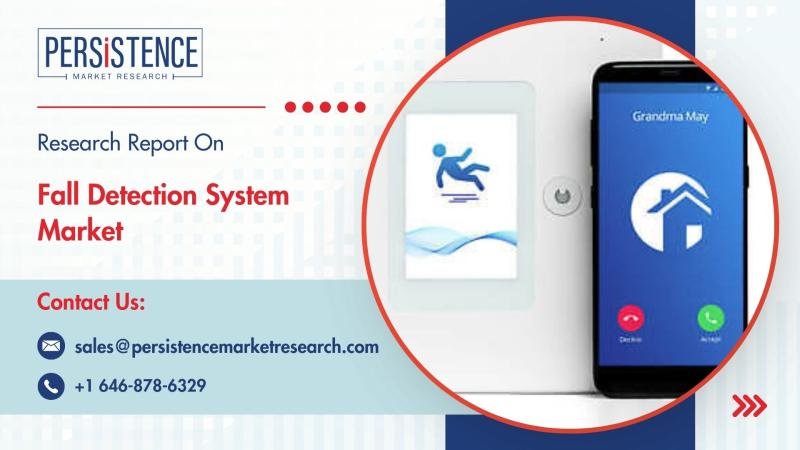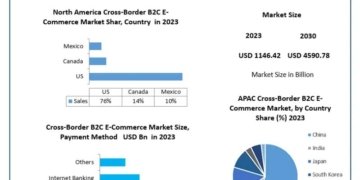✅Overview of the Market
The global fall detection system market is witnessing robust growth driven by a rapidly aging population, rising awareness of senior care technologies, and increasing demand for real-time emergency response systems. Fall detection systems play a critical role in ensuring safety, particularly among the elderly and patients with chronic health conditions. These systems use sensors, wearable devices, and AI algorithms to detect sudden movements, triggering alerts to caregivers or medical personnel. As the demand for independent living increases, the role of fall detection technology becomes increasingly significant.
According to the latest study by Persistence Market Research, the market is projected to grow from US$ 508.4 million in 2025 to US$ 697.5 million by 2032, exhibiting a CAGR of 4.6% during the forecast period. The wearable systems segment dominates due to its wide adoption, portability, and affordability. North America holds the leading market share, owing to its advanced healthcare infrastructure, high awareness levels, and significant elderly population. Meanwhile, Asia Pacific is expected to show strong growth due to a rising aging population and healthcare digitization initiatives in countries like Japan and China.
Get a Sample PDF Brochure of the Report (Use Corporate Email ID for a Quick Response): https://www.persistencemarketresearch.com/samples/8878
✅Key Market Insights
➤ The wearable fall detection systems segment remains dominant, driven by ease of use and growing adoption among home care users.
➤ North America leads the global market due to a well-established healthcare infrastructure and high elderly population.
➤ AI and machine learning integration in fall detection devices is enhancing accuracy and reducing false alarms.
➤ The rise in independent living among seniors is fueling the demand for personalized fall detection solutions.
➤ Government and insurance support for remote patient monitoring are boosting the adoption of fall detection technologies.
✅What is the primary reason for the growing demand in the fall detection system market?
The primary reason for the growing demand in the fall detection system market is the increasing global aging population, which is more susceptible to falls and related injuries. As people seek to maintain independent living while ensuring their safety, fall detection systems provide peace of mind for both users and caregivers. Additionally, the rising prevalence of chronic conditions and neurological disorders has increased the need for continuous health monitoring. Technological advancements such as AI-powered systems and smart wearables further enhance reliability, making fall detection systems a vital part of elderly care solutions worldwide.
✅Market Dynamics
Drivers:
Key drivers for the fall detection system market include the increasing geriatric population globally, technological advancements in wearables and sensors, and the growing trend of aging in place. In addition, the integration of fall detection into broader telehealth ecosystems is providing a seamless and efficient method for elderly care. These systems not only provide real-time monitoring but also reduce the time between fall occurrence and response, potentially saving lives.
Market Restraining Factor:
A significant restraint in the market is the high cost of advanced fall detection systems, which may limit adoption in developing economies. Additionally, the potential for false alarms and reliability issues in some sensor-based systems can deter user trust and hinder widespread deployment, especially in unsupervised environments.
Key Market Opportunity:
There is a growing opportunity in emerging markets where demographic transitions are leading to a rapid increase in the elderly population. Additionally, as home healthcare continues to expand and awareness of fall-related injuries rises, companies have the chance to offer cost-effective, scalable fall detection solutions tailored for low- and middle-income populations.
✅Market Segmentation
The fall detection system market is segmented based on product type, technology, and end-user. By product type, it is classified into wearable systems and non-wearable systems. Wearable systems dominate due to their convenience, mobility, and continuous monitoring capability. These include smartwatches, pendants, and belt clips equipped with accelerometers and gyroscopes. Non-wearable systems, while gaining popularity in smart home setups, are mostly limited by location dependency and installation costs.
By technology, the market is segmented into automatic fall detection systems and manual fall detection systems. Automatic systems are expected to dominate as they eliminate the need for user interaction and provide real-time alerts, crucial in cases where the person is unconscious or unable to seek help. Manual systems require the user to trigger an alert and are preferred in cases where immediate response may not be necessary. End-users include home care settings, senior assisted living facilities, and hospitals, with home care leading due to the rising preference for aging in place and growing home healthcare services across both developed and developing nations.
✅Regional Insights
North America leads the global fall detection system market owing to its high healthcare expenditure, supportive government policies, and advanced medical technologies. The United States, in particular, has a well-developed ecosystem for remote patient monitoring and elderly care services, supported by reimbursement models and insurance coverage for assistive devices. Europe follows closely, with countries like Germany, France, and the UK focusing on elderly welfare and innovation in geriatric care. Asia Pacific is emerging as a high-growth region, driven by rapidly aging populations in Japan and China, growing healthcare awareness, and increasing investment in digital health infrastructure. Latin America and the Middle East & Africa are witnessing moderate growth, yet the potential is expanding as governments introduce healthcare reforms and awareness spreads about senior safety and fall prevention.
✅Competitive Landscape
The fall detection system market is moderately fragmented with a mix of established healthcare technology providers and emerging startups. Companies are investing in R&D to improve detection accuracy and integrate advanced analytics, AI, and mobile connectivity. Collaborations with healthcare providers and integration into broader digital health platforms are common strategies.
✅Company Insights
✦ ADT Inc.
✦ Tunstall Healthcare Group Ltd.
✦ Medical Guardian LLC
✦ Bay Alarm Medical
✦ MobileHelp
✦ Lifefone Medical Alert Services
✦ Koninklijke Philips N.V.
✦ Connect America LLC
✦ Legrand Assisted Living & Healthcare
✦ Apple Inc.
✦ Vayyar Imaging Ltd.
For Customized Insights on Segments, Regions, or Competitors, Request Personalized Purchase Options @ https://www.persistencemarketresearch.com/request-customization/8878
✅Key Industry Developments
In recent years, leading players have focused on strategic partnerships and product innovation. For example, Apple has enhanced its smartwatch fall detection features with improved sensors and real-time emergency contact notifications. Similarly, Tunstall Healthcare has launched AI-driven remote monitoring systems designed for senior citizens, which combine fall detection with broader health metrics.
ADT Health and MobileHelp have expanded their service offerings with GPS-enabled fall detection systems, providing seniors with the freedom to move while ensuring continuous safety. These systems are increasingly integrated into mobile applications, allowing family members and caregivers to monitor alerts and ensure quick response times, thereby creating a comprehensive safety net.
✅Innovation and Future Trends
Innovation in the fall detection system market is increasingly focused on AI and machine learning, which improve the accuracy of fall prediction and reduce false alarms. Advanced algorithms analyze real-time movement data to distinguish between actual falls and routine activities. Wearable technologies are also evolving, with miniaturization, better battery life, and improved comfort making them more user-friendly and widely accepted among older adults.
Future trends suggest a shift toward multi-sensor platforms that combine fall detection with other vital sign monitoring tools like heart rate, blood pressure, and oxygen saturation. Integration with smart home ecosystems is expected to grow, allowing seamless communication between fall detection systems and home automation tools such as voice-activated assistants, security systems, and emergency response networks. This convergence of technology will reshape how fall-related health risks are managed, making elderly care more proactive, preventive, and personalized.
✅Explore the Latest Trending “Exclusive Article” @
• https://techxpresstoday.wordpress.com/2025/07/03/pedestrian-entrance-control-systems-market-demand-rising-with-urban-security-needs/
• https://medium.com/@apnewsmedia/pedestrian-entrance-control-systems-market-share-by-leading-companies-5be92142b953
• https://vocal.media/stories/pedestrian-entrance-control-systems-market-growth-trends-and-future-outlook
• https://apsnewsmedia.blogspot.com/2025/07/automotive-camera-cleaning-system.html
• https://www.manchesterprofessionals.co.uk/article/information-technology/96656/pedestrian-entrance-control-systems-market-overview-and-key-insights
✅Contact Us:
Persistence Market Research
G04 Golden Mile House, Clayponds Lane
Brentford, London, TW8 0GU UK
USA Phone: +1 646-878-6329
UK Phone: +44 203-837-5656
Email: sales@persistencemarketresearch.com
Web: https://www.persistencemarketresearch.com
✅About Persistence Market Research:
At Persistence Market Research, we specialize in creating research studies that serve as strategic tools for driving business growth. Established as a proprietary firm in 2012, we have evolved into a registered company in England and Wales in 2023 under the name Persistence Research & Consultancy Services Ltd. With a solid foundation, we have completed over 3600 custom and syndicate market research projects, and delivered more than 2700 projects for other leading market research companies’ clients.
Our approach combines traditional market research methods with modern tools to offer comprehensive research solutions. With a decade of experience, we pride ourselves on deriving actionable insights from data to help businesses stay ahead of the competition. Our client base spans multinational corporations, leading consulting firms, investment funds, and government departments. A significant portion of our sales comes from repeat clients, a testament to the value and trust we’ve built over the years.
This release was published on openPR.
















